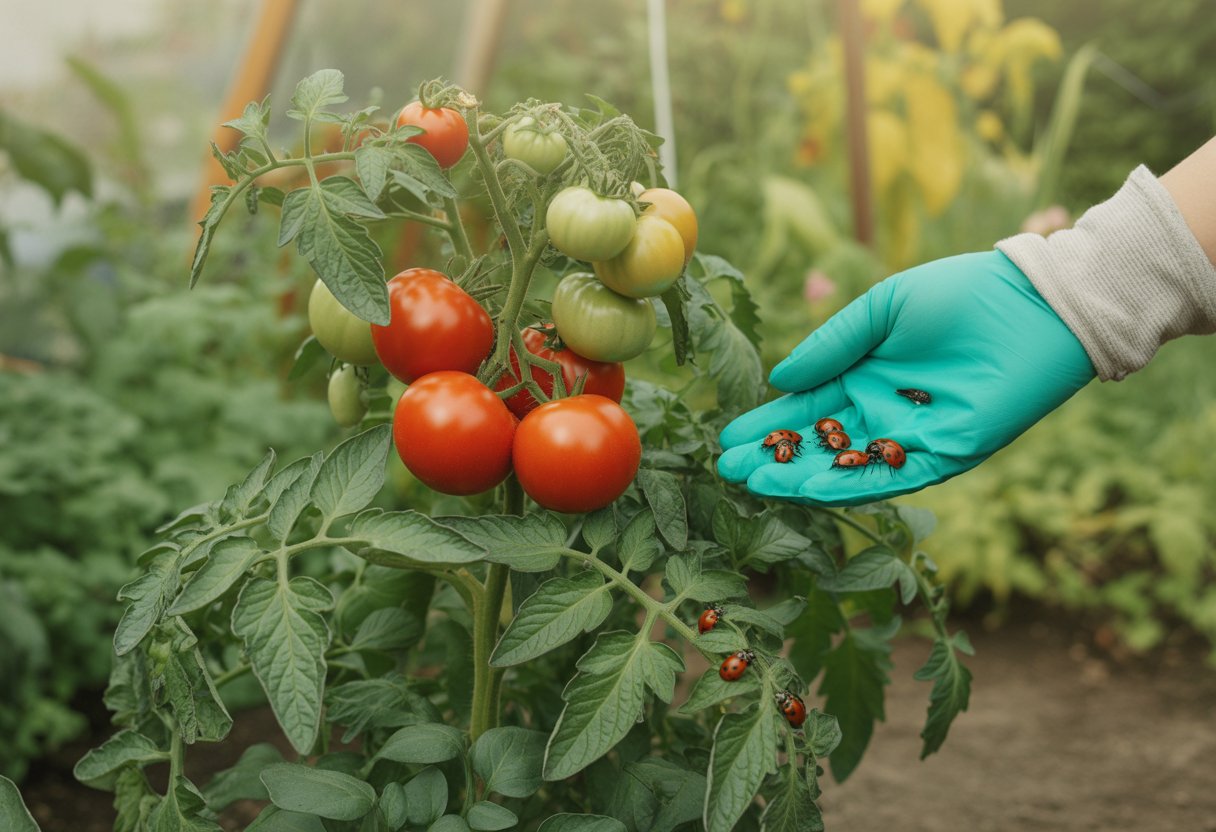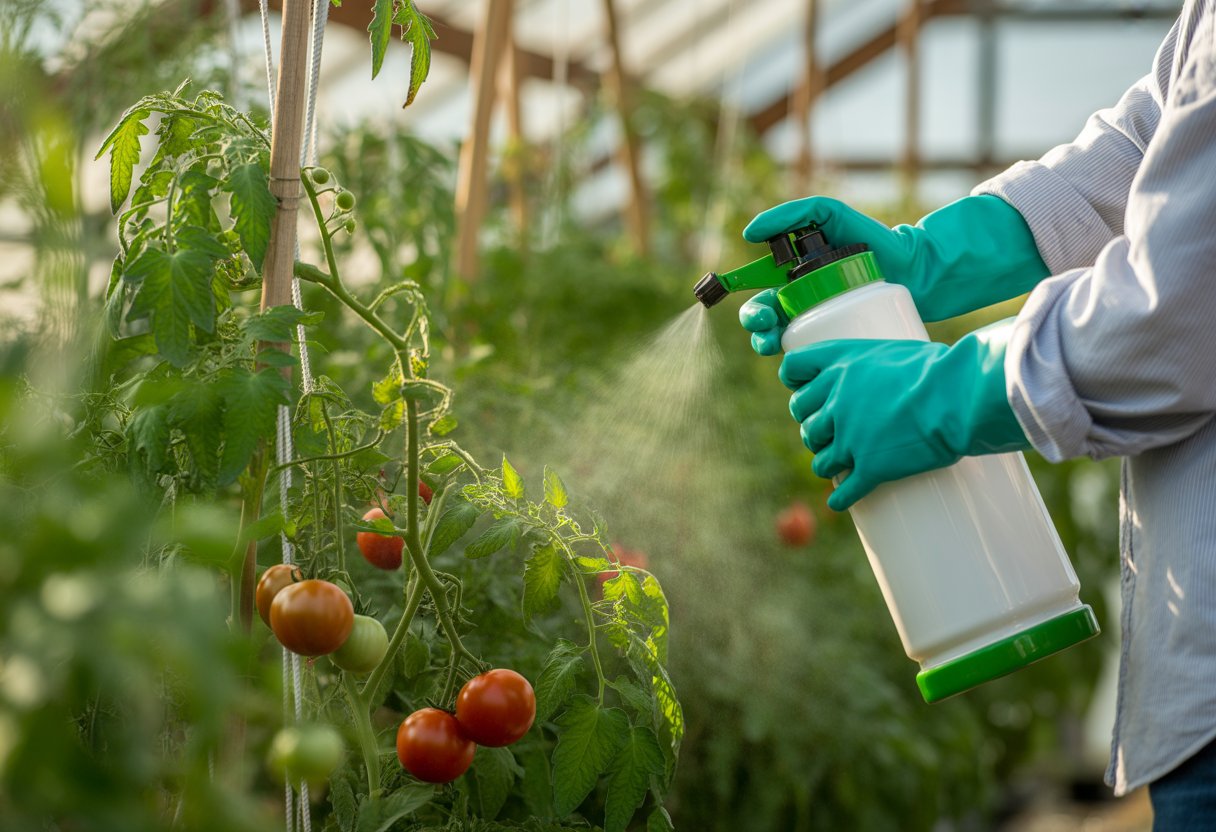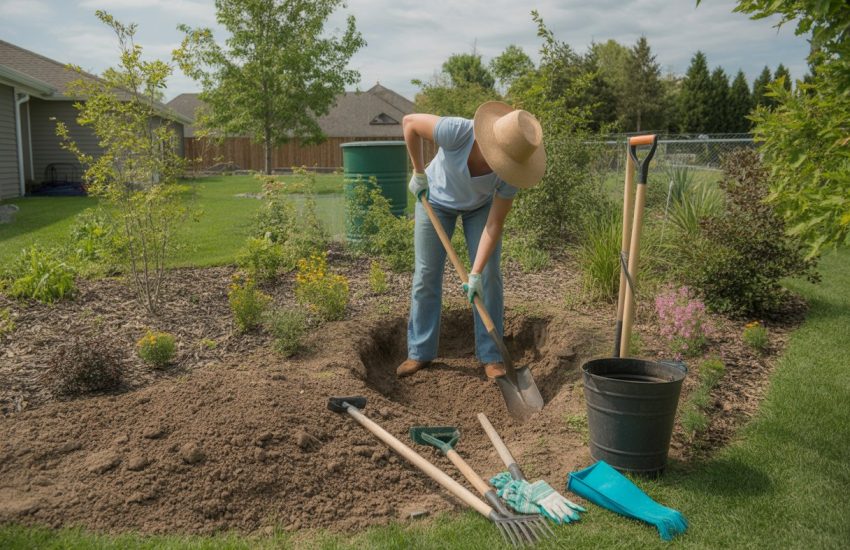Organic Pest Control for Tomato Effective Strategies to Protect Your Crop Naturally
Tomato plants face a constant barrage from pests that can chew up leaves, stems, and fruit. Keeping these pests in check is key if you want strong plants and a decent harvest.
Organic pest control for tomatoes leans into natural methods that are gentler on the environment and keep your plants thriving.

Using beneficial insects, homemade sprays, and companion planting lets you manage common pests without leaning on synthetic chemicals. These methods encourage a balanced ecosystem and help prevent pests from building resistance.
Gardeners who go for organic pest control can protect their tomatoes and keep soil and water quality intact.
Knowing which bugs target tomatoes and how to keep them away naturally is pretty much the heart of organic gardening. This approach feels practical and sustainable, and you end up with tomatoes that are safe to eat and a garden that’s a little kinder to the planet.
Common Tomato Pests and Their Impact
Tomato plants deal with a parade of insect pests, each causing its own kind of trouble to leaves and fruit. Figuring out which pests you’re dealing with and how they behave makes a big difference in getting rid of them.
Identifying Major Insect Pests
You’ll probably spot aphids, mites, flea beetles, caterpillars, and beetles on tomato plants. Aphids crowd around new shoots, sucking sap and spreading diseases.
Spider mites leave behind tiny speckles and webbing. Flea beetles chew little holes in the leaves, which can slow down photosynthesis.
Caterpillars like the tomato fruitworm (or corn earworm) and hornworm larvae gnaw big holes in leaves and fruit. The black cutworm chops down seedlings right at the soil line. And the Colorado potato beetle? It can strip a plant bare in no time.
Types of Feeding Damage
Some pests chew, others pierce or suck. Chewing insects—think hornworms and flea beetles—take out chunks of leaf, which hurts the plant’s ability to make food.
Caterpillars sometimes tunnel into fruit, making tomatoes unfit for the table. Sap-suckers like aphids and mites drain nutrients, causing leaves to curl, yellow, or just stop growing.
Aphids also leave behind sticky honeydew, which attracts fungal diseases and can make things even worse.
Understanding Pest Life Cycles
Most tomato pests go through egg, larva (or nymph), pupa, and adult stages. Hornworms hatch from eggs on leaves and do the most damage as larvae. Adult beetles lay eggs close to the plants, and their young go to town on the foliage.
Black cutworm larvae feed at night and chop down young plants while you sleep. If you know when pests are most vulnerable, you can time your control efforts for the best results. Keeping an eye on pest numbers during these stages can really help limit damage.
Organic Pest Control Methods for Tomato
Organic pest control for tomatoes means blocking pests, using natural sprays, bringing in helpful insects, and keeping your plants strong. Mixing these tactics works better than relying on just one thing.
Physical Barriers and Traps
Row covers and collars can keep pests off your tomato plants. Lightweight fabric row covers block insects like hornworms and whiteflies, but still let in light and water.
Stem collars stop cutworms from taking out young plants. Yellow sticky traps lure flying pests, cutting their numbers. Picking off big pests like hornworms by hand is old-school but still works.
Checking your plants often helps you catch problems early.
Homemade Sprays and Natural Solutions
You can whip up homemade sprays using things like liquid soap, horticultural oil, milk, or vinegar. A simple mix of liquid soap and water messes with pests’ exoskeletons—just make sure you cover the leaves well.
Horticultural oils smother pests like aphids and mites, but you’ve got to follow the label to avoid burning your plants. Milk spray can help with fungal diseases and even keeps some bugs away.
Diluted vinegar might repel ants and aphids, but go easy—it’s acidic and can harm your plants if overdone.
Biological Control Approaches
Bringing in natural enemies of pests is a smart move. Ladybugs, lacewings, and parasitic wasps take care of aphids, whiteflies, and caterpillars for you.
You can release these good bugs or make your garden more inviting for them. Nematodes in the soil can target cutworms.
Adding flowering plants nearby helps keep beneficial insects around. It’s all about balance—let nature do some of the heavy lifting.
Cultural Practices for Prevention
Smart gardening habits make a difference. Rotating crops keeps pests from finding a home year after year.
Cleaning up plant debris and pulling weeds takes away breeding spots. Watering right and giving plants space helps them stay healthy and less tempting to pests.
Mulch keeps soil-dwelling pests at bay. Pruning lower leaves boosts air flow and cuts down on fungal issues. If you spot infested leaves, remove them fast so pests don’t spread.
Safe Use and Application of Organic Pesticides

Using organic pesticides right matters if you want to protect your tomatoes and still be kind to helpful insects and the environment. Pick the right product, cover your plants thoroughly, and always read the label.
Choosing the Right Products
Choose an organic pesticide that targets the specific pest bugging your tomatoes—maybe aphids, whiteflies, or caterpillars. Neem oil, insecticidal soap, and pyrethrin are pretty common options.
Make sure the product lists your pest and is safe for tomatoes. Go for ones that won’t hurt ladybugs or pollinators if you can.
Check if there are any restrictions for use during flowering or fruiting, just to be safe.
Effective Coverage Techniques
You’ve got to cover the whole plant—especially the undersides of leaves, since that’s where pests love to hide. Don’t forget stems and fruit, either.
If you spray unevenly, some pests will dodge the treatment. Calibrate your sprayer for a fine, even mist.
Spray early in the morning or late in the day. That way, sunlight won’t break down the pesticide too fast, and you’ll avoid harming pollinators that are busy during midday.
Interpreting Labels and Instructions
Reading product labels matters for safe and effective use. Labels spell out mixing ratios, application rates, and safety steps.
You’ll often see instructions about how much to use and how often. Stick to the recommended dosages—going overboard can damage your plants or just waste your effort.
Labels mention how often you can reapply and what gear you should wear, like gloves or a mask. Don’t skip over any warnings about harvest intervals after spraying; that’s key for keeping your tomatoes safe to eat.


